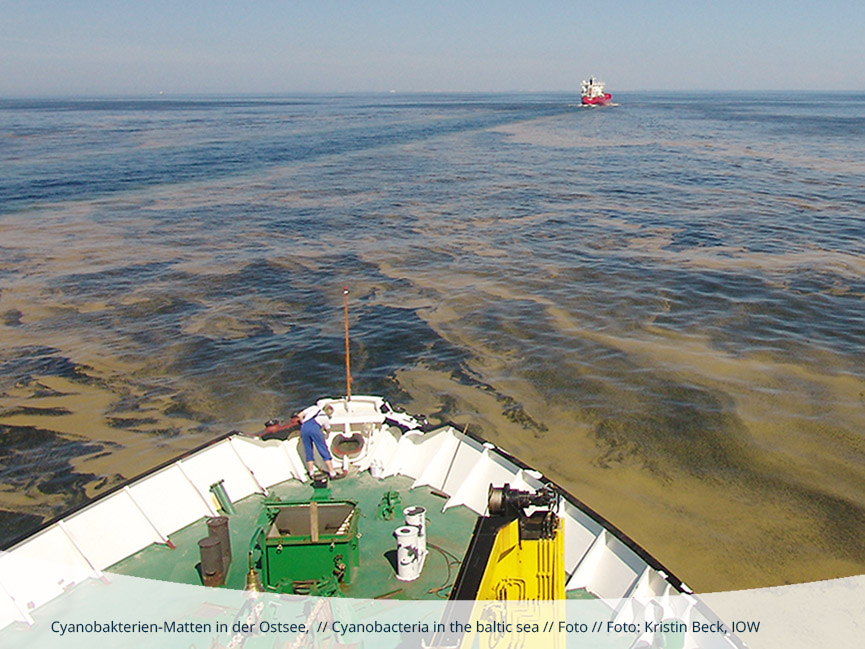
Cyanobacteria, the killjoys at the beach
Case study
Cyanobacteria, also known as “blue green algae” are among the organisms that benefit from ocean change. In the Baltic Sea, the species Nodularia spumigena manages perfectly with water temperatures above 16 degrees Celsius and elevated carbon dioxide concentrations – whereas other organisms already reach their limits at less warming. The microscopic filamentous bacteria produce organic material using nitrogen from the air and the phosphate that is abundant in the Baltic Sea. In summer, they grow in large number and develop so-called blooms. The bacteria can then form patches bigger than 60,000 square kilometres on the water surface. BIOACID experiments suggest that the combination of warming, ocean acidification and oxygen limitation will support the productivity of cyanobacteria.
Beneath the bacterial mats, other organisms have difficulties to survive, as they lack the necessary light for growth. The degradation of dead cycnoabacteria blooms at the seafloor requires more oxygen – which can affect life in an environment that is already poor in oxygen.
Swimming is often prohibited during blue-green algae blooms, because Nodularia spumigena releases the toxins microcystin and nodularin from its cells. They can irritate the skin and eyes or cause sickness in humans. The toxins can also harm the livers of smaller marine animals.
Learn more about BIOACID research on cyanobacteria in this video portait of Dr. Nicola Wannicke.
NEXT: Ethical aspects